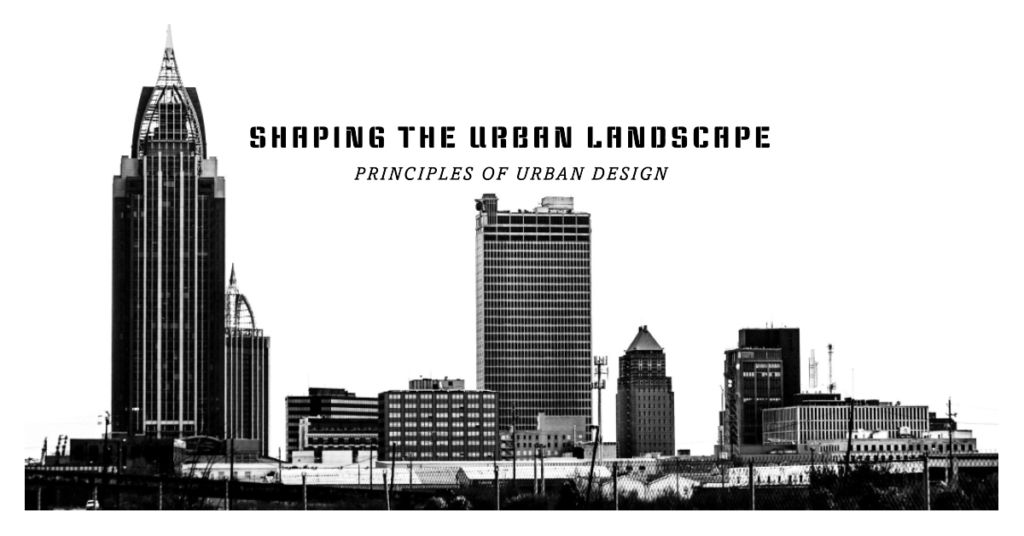
Table of Contents
Introduction: Understanding the Essence of Urban Design
Urban landscapes are not merely haphazard collections of buildings, roads, and parks; they are meticulously crafted spaces that influence the quality of life for millions of inhabitants. Urban design is the art and science of shaping cities, towns, and communities to create functional, aesthetically pleasing, and sustainable environments. It encompasses a myriad of disciplines, from architecture and landscape architecture to urban planning and sociology. In this blog post, we delve into the fundamental principles of urban design that serve as the guiding lights for architects, planners, and policymakers in shaping the modern urban landscape.
The Power of Context: Contextualism in Urban Design
Contextualism lies at the heart of effective urban design, emphasizing the importance of harmonizing new developments with the existing built environment. By understanding the historical, cultural, and environmental context of a site, designers can create spaces that seamlessly integrate into their surroundings, enhancing rather than detracting from the urban fabric. For example, in historic districts, preservation of architectural heritage and adherence to traditional design principles may take precedence, fostering a sense of continuity and identity. Conversely, in areas undergoing rapid transformation, such as former industrial zones or brownfield sites, adaptive reuse and innovative design solutions can breathe new life into neglected spaces while respecting their industrial legacy.
The Human Scale: Designing for People (Urban Landscape)
Central to successful urban design is the concept of designing for people, prioritizing human experience and well-being above all else. This principle advocates for creating pedestrian-friendly streetscapes, vibrant public spaces, and mixed-use developments that cater to the diverse needs of residents and visitors alike. By placing emphasis on walkability, accessibility, and social interaction, cities can foster a sense of community and belonging, thereby improving overall livability. For instance, the incorporation of wide sidewalks, street furniture, and greenery not only enhances the aesthetic appeal of urban thoroughfares but also encourages active transportation and fosters social encounters among pedestrians.
Sustainability in Action: The Green Imperative
In an era of rapid urbanization and climate change, sustainability has emerged as a paramount concern in urban design. Sustainable design principles seek to minimize the ecological footprint of cities while maximizing their resilience and adaptability to environmental challenges. This entails integrating green infrastructure, renewable energy systems, and resource-efficient technologies into the urban fabric to reduce energy consumption, mitigate pollution, and combat urban heat island effects. For example, green roofs and permeable pavements can help manage stormwater runoff and improve air quality, while urban forests and community gardens enhance biodiversity and provide valuable ecosystem services.


Connectivity and Accessibility: The Networked City
The concept of connectivity underscores the importance of well-planned transportation and mobility networks in fostering economic vitality, social equity, and environmental sustainability. By prioritizing public transit, cycling infrastructure, and pedestrian pathways, cities can reduce reliance on private automobiles, alleviate traffic congestion, and promote active modes of transportation. Additionally, enhancing connectivity between neighborhoods, commercial centers, and recreational amenities improves accessibility for all residents, regardless of age, income, or mobility status. Initiatives such as complete streets design and transit-oriented development aim to create cohesive, multimodal urban environments that facilitate seamless movement and connectivity.
Identity and Place-making: Cultivating a Sense of Belonging
Place-making is the art of shaping public spaces to reflect the unique identity, history, and culture of a community, fostering a sense of belonging and attachment among residents. Whether through public art installations, cultural festivals, or community-driven design processes, cities can celebrate their heritage and diversity while promoting social cohesion and civic pride. By engaging stakeholders in the design and activation of shared spaces, urban designers can create inclusive environments that resonate with the collective memory and aspirations of the people who inhabit them. For example, revitalizing derelict waterfronts or repurposing vacant lots as community gardens can transform underutilized areas into vibrant hubs of social activity and cultural expression.
Resilience and Adaptation: Designing for an Uncertain Future
In an era marked by rapid urbanization, demographic shifts, and climate variability, resilience has become a critical consideration in urban design practice. Resilient cities are able to withstand and recover from shocks and stresses, whether they be natural disasters, economic downturns, or social upheavals. By integrating principles of resilience into the planning and design process, cities can future-proof their infrastructure, strengthen social networks, and enhance their capacity to adapt to changing conditions. Strategies such as green infrastructure, coastal defenses, and compact urban form can help mitigate the impacts of climate change and foster long-term sustainability.
Equity and Social Justice: Designing for All
Urban design has the power to either exacerbate or alleviate social inequalities, depending on how it is implemented. Equity-centered design seeks to redress historical injustices, address systemic disparities, and ensure that the benefits of urban development are equitably distributed among all members of society. This requires prioritizing affordable housing, inclusive public spaces, and accessible amenities in underserved neighborhoods, as well as promoting participatory decision-making processes that empower marginalized communities. By fostering social cohesion and economic opportunity, equitable urban design can contribute to greater social justice and shared prosperity for urban residents.
Conclusion: Paving the Way Forward
In conclusion, the principles of urban design serve as guiding principles for creating cities that are not only functional and aesthetically pleasing but also sustainable, inclusive, and resilient. By embracing contextualism, designing for people, and prioritizing sustainability, cities can foster vibrant urban landscapes that enhance the quality of life for current and future generations. As we confront the complex challenges of the 21st century, from climate change to social inequality, the imperative to design cities that are equitable, accessible, and resilient has never been greater. Through thoughtful planning, innovative design solutions, and meaningful community engagement, we can shape urban environments that reflect our values, aspirations, and collective vision for the future.



